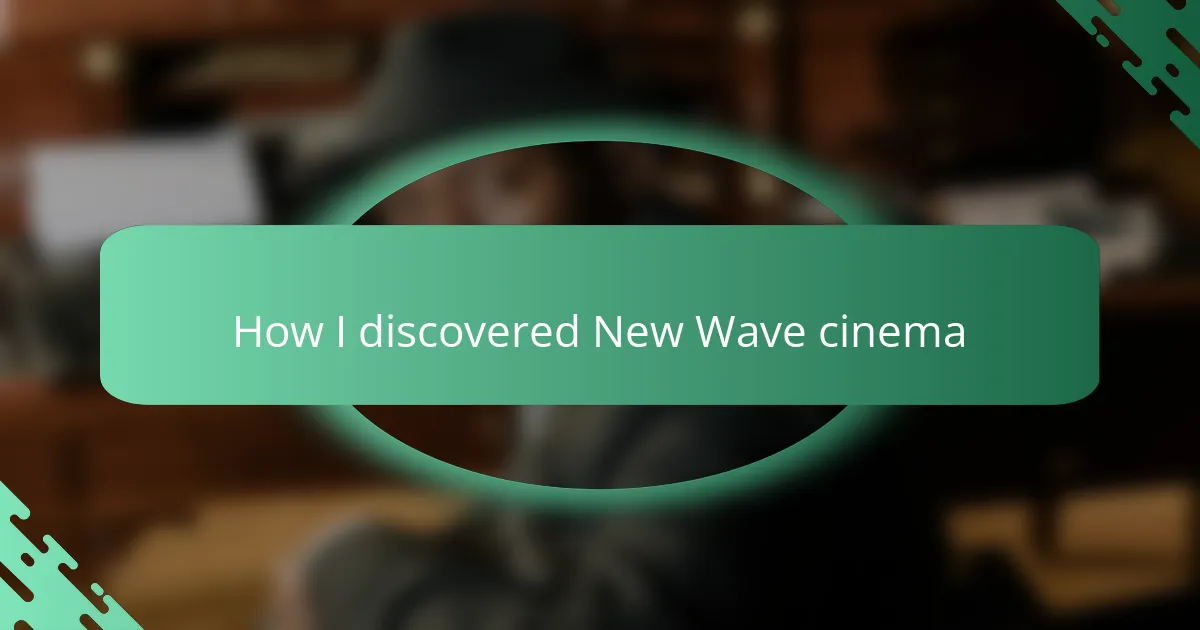Key takeaways
- New Wave cinema, originating in France during the late 1950s, introduced innovative storytelling and realism through techniques like jump cuts and on-location shooting.
- Key films include François Truffaut’s “The 400 Blows,” Jean-Luc Godard’s “Breathless,” and Agnès Varda’s “Cléo from 5 to 7,” each showcasing personal and universal themes.
- Influential directors Truffaut, Godard, and Varda pushed storytelling boundaries, presenting flawed characters and authentic narratives that deeply resonate with audiences.
- New Wave cinema encourages breaking conventions in filmmaking, emphasizing authenticity and emotional connection through relatable characters and real-life experiences.

Overview of New Wave cinema
New Wave cinema, or La Nouvelle Vague, emerged in France during the late 1950s and early 1960s, fundamentally changing the landscape of filmmaking. I remember being captivated by its fresh energy and innovative storytelling when I first delved into this genre. Directors like François Truffaut and Jean-Luc Godard took bold risks, breaking away from traditional practices to create films that felt raw and authentic.
The characteristics of New Wave cinema that stood out to me include:
- A focus on realism, often using non-professional actors.
- Innovative editing techniques, such as jump cuts, which broke the conventional flow.
- The use of on-location shooting to capture the essence of everyday life.
- A narrative style that embraced ambiguity, inviting viewers to interpret the story in their own way.
- Exploration of contemporary social issues, reflecting the changing cultural landscape of post-war France.
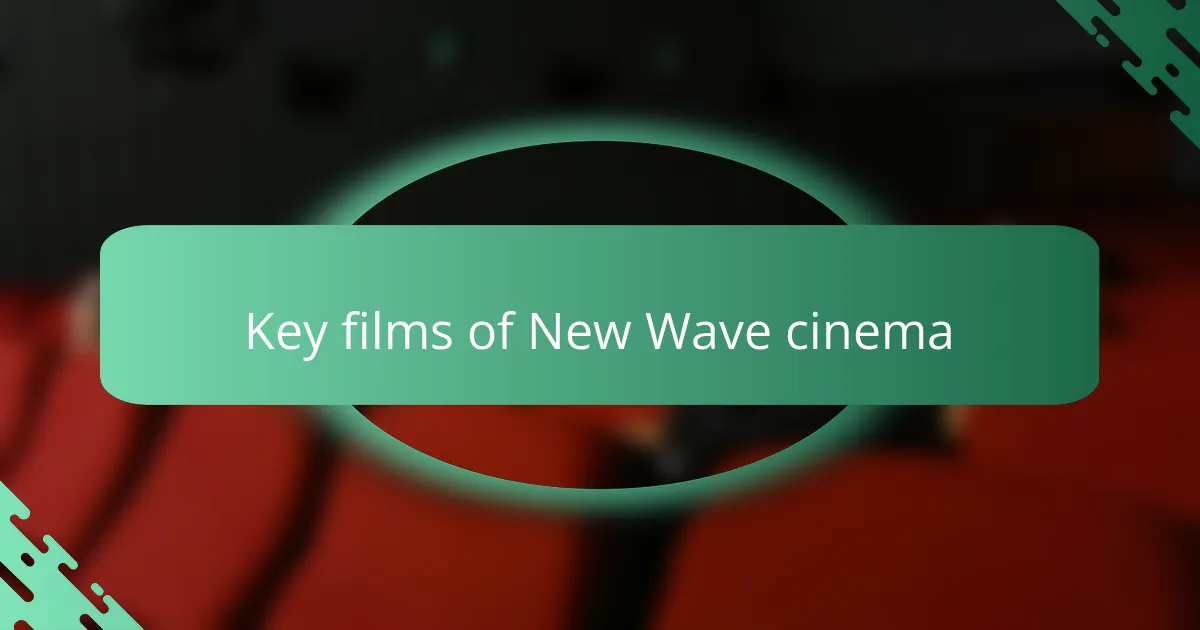
Key films of New Wave cinema
One of the cornerstone films of New Wave cinema is François Truffaut’s “The 400 Blows” (1959). This film resonated with me deeply, as it follows a young boy’s troubled journey in Paris, mirroring the harsh realities many face. I often reflect on how Truffaut’s candid approach to childhood and rebellion beautifully encapsulated the spirit of a generation, leaving an indelible mark on my understanding of film.
Jean-Luc Godard’s “Breathless” (1960) is another essential piece worth mentioning. I remember watching it and being electrified by its unconventional storytelling and edgy style. The jump cuts felt like an infusion of adrenaline, breaking all the rules I thought I knew about filmmaking. It challenged me to embrace the unexpected, reinforcing that cinema could be an art form that mirrors the chaos of life itself.
A lesser-known gem, “Cléo from 5 to 7” by Agnès Varda, is a poignant exploration of time and identity. I find myself revisiting this film whenever I seek reflection, as it captures the complexities of being human through Cléo’s intriguing two-hour journey in Paris. The film invites viewers to ponder how fleeting moments can shape our lives. Have you ever felt that every tick of the clock brings new meaning to your existence? Varda’s work masterfully portrays this essence, making it truly unforgettable.

Influential directors in New Wave
When I think about the influential directors in New Wave cinema, the names that immediately come to mind are François Truffaut, Jean-Luc Godard, and Agnès Varda. Each of them brought a unique voice that pushed the boundaries of storytelling and film technique. Watching Truffaut’s “The 400 Blows” for the first time was a revelation; it felt both personal and universal, echoing my own childhood experiences while showcasing a raw honesty that was revolutionary for its time.
Similarly, Godard’s “Breathless” introduced me to a completely new narrative style, one where the film didn’t always follow traditional plot structures, captivating me from start to finish. And then there’s Varda, whose films resonate with such emotional depth and visual poetry—her work truly opened my eyes to the possibilities of female storytelling in film.
| Director | Notable Work |
|---|---|
| François Truffaut | The 400 Blows |
| Jean-Luc Godard | Breathless |
| Agnès Varda | Cléo from 5 to 7 |
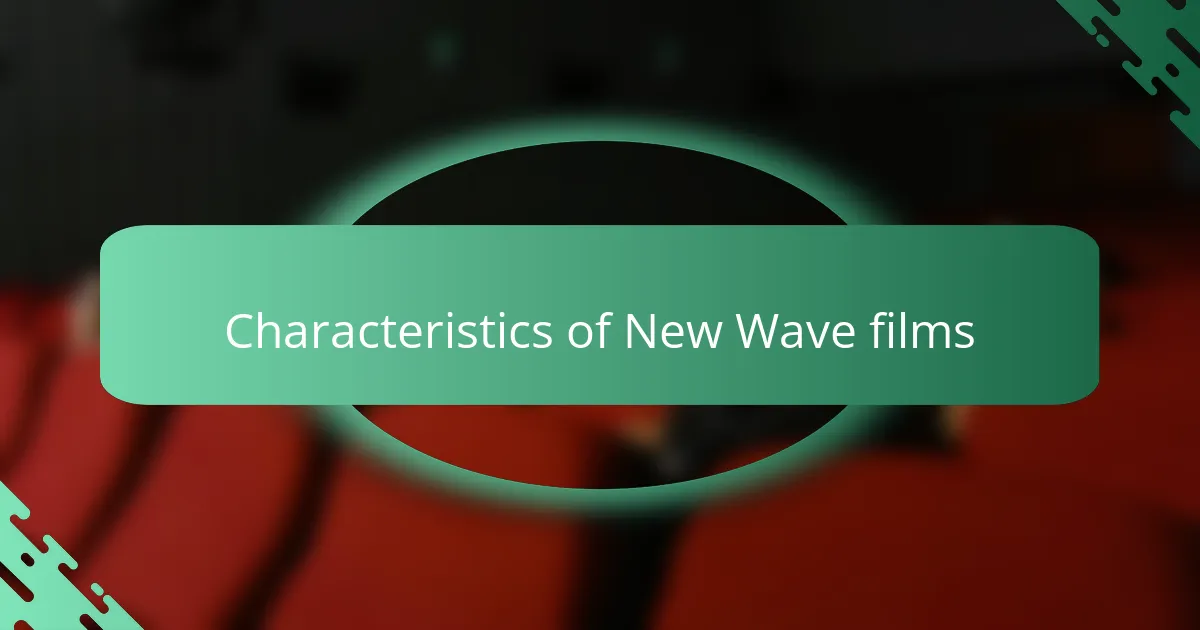
Characteristics of New Wave films
The hallmark of New Wave cinema is its embrace of realism. When I first encountered films featuring non-professional actors, it felt like a revelation. Watching their unpolished performances, I found a depth that traditional actors sometimes lack. This authenticity pulls viewers into the story in an almost intimate way, making the characters relatable and their experiences poignant.
Another standout characteristic is the innovative use of editing, especially the notorious jump cuts. The first time I saw them in Godard’s “Breathless,” I was stunned. It felt like a breath of fresh air—disruptive yet exhilarating. It challenged my perception of continuity in editing. This technique, breaking away from convention, gave films a dynamic energy that mirrored the excitement of modern life.
On-location shooting became a signature style, allowing directors to capture the essence of post-war France. The vibrancy of the streets, the hustle of everyday life—it all resonated with me when I saw these settings come alive on screen. It made me ponder: how much do our surroundings shape our stories? In New Wave films, the locations aren’t just backdrops; they’re integral to the narrative, offering viewers a rich, immersive experience.
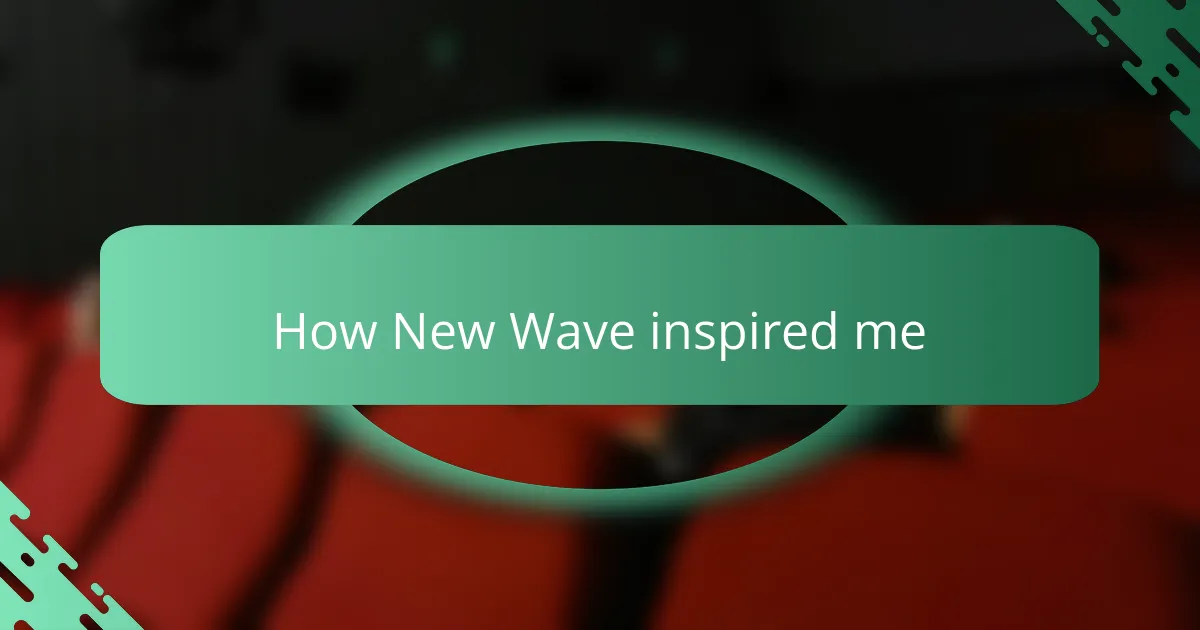
How New Wave inspired me
New Wave cinema has profoundly influenced my perspective on storytelling and art. The first time I watched Jean-Luc Godard’s “Breathless,” I was struck by its audacity. Those jump cuts weren’t just a technique; they were a revelation for me, inviting a sense of spontaneity and a rawness that felt like a reflection of life’s unpredictability. It inspired me to see that films could break rules and still resonate deeply, pushing me to experiment with my own creative expressions.
I vividly remember the emotional impact of watching Agnès Varda’s “Cléo from 5 to 7.” I was drawn into Cléo’s world, feeling her anxieties and joys almost viscerally. This film encouraged me to understand the value of time—the fleeting moments that define our identities. It made me question: how do these small, seemingly trivial moments influence our journey? Reflecting on my own life, I realized that every encounter holds the potential to shape who we are, much like Cléo’s experience in that two-hour timeframe.
The essence of realism in New Wave films, where stories mirror the intricacies of ordinary life, lit a spark in me. Watching characters portrayed by non-professional actors made them immensely relatable, as if they were my neighbors and friends. It reinforced my belief that authenticity in storytelling connects us all. To me, this cinematic approach wasn’t just a style; it was a philosophy that encouraged vulnerability. How often do we see ourselves in flawed, real characters? This profound connection ignited my passion for films that tell honest, human stories.

Personal favorites in New Wave
There are a few films from the New Wave that have carved out special places in my heart. For instance, “The 400 Blows” always resonates with me, not just for its storytelling but for its emotional authenticity. When I watch Antoine’s struggles, I can’t help but reflect on my own childhood experiences. It’s like looking into a mirror, prompting me to question how much our past shapes our present.
Another favorite is Varda’s “Cléo from 5 to 7.” I find myself captivated by the way it explores the human condition. The slow ticking of the clock in the film often makes me ponder my own relationship with time. Have you ever felt that each moment holds immense significance? This film embraces that feeling beautifully, making me realize how our perceptions can change in an instant.
And then there’s Godard’s “Breathless,” which electrifies me with its bold narrative choices. Each jump cut feels like a heartbeat, quickening the pace and making me reconsider what a story can be. It’s fascinating how a film can break conventions yet still evoke such raw emotion. I often ask myself: how do these unconventional methods push the boundaries of my understanding of cinema? Each viewing deepens my appreciation for the art form and uncovers something new within its layers.
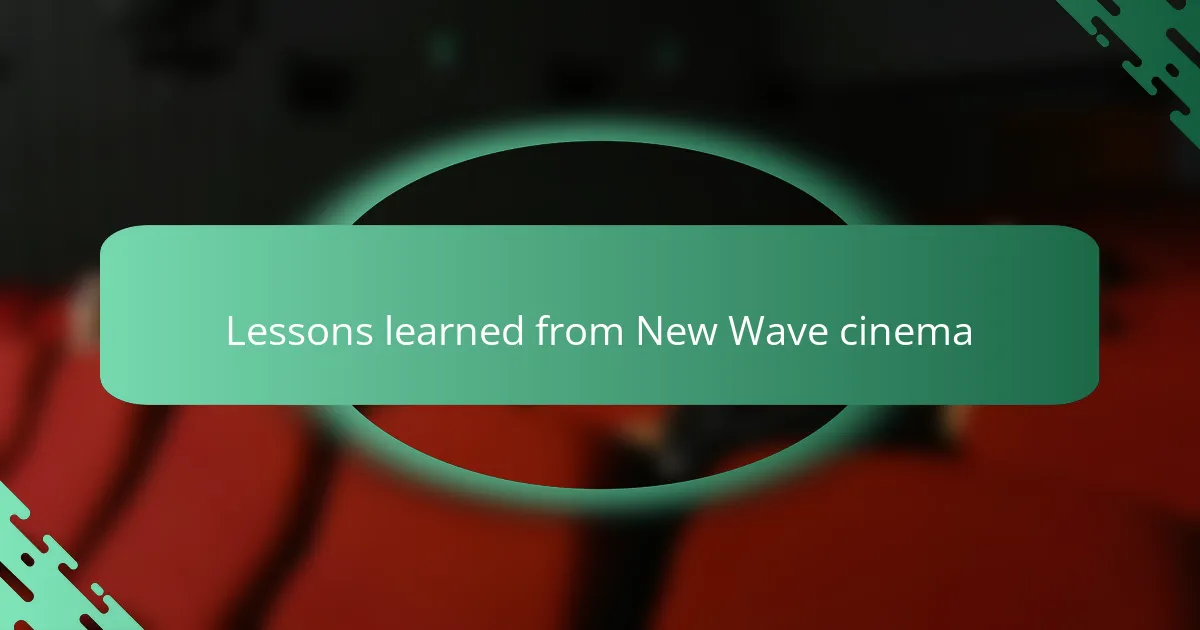
Lessons learned from New Wave cinema
New Wave cinema taught me the importance of breaking conventions. Directors like Jean-Luc Godard and François Truffaut dared to defy traditional storytelling methods, which encouraged me to embrace creativity and be bold in my own work. The raw editing and handheld camera work resonated with a sense of authenticity that I found incredibly refreshing.
I remember watching “Breathless” for the first time; it was like nothing I’d ever seen. The characters felt real, their flaws palpable, and I realized that filmmaking can be not just about perfection, but also about capturing the imperfect beauty of life. This sentiment inspires me to always look for the underlying truth in any story I want to tell.
Here’s a comparison table showcasing some key aspects of traditional cinema versus New Wave cinema:
| Aspect | Traditional Cinema | New Wave Cinema |
|---|---|---|
| Storytelling | Linear narratives | Non-linear, fragmented narratives |
| Filmmaking Techniques | Studio-controlled, polished | Handheld cameras, natural lighting |
| Character Development | Idealized characters | Flawed, relatable characters |
